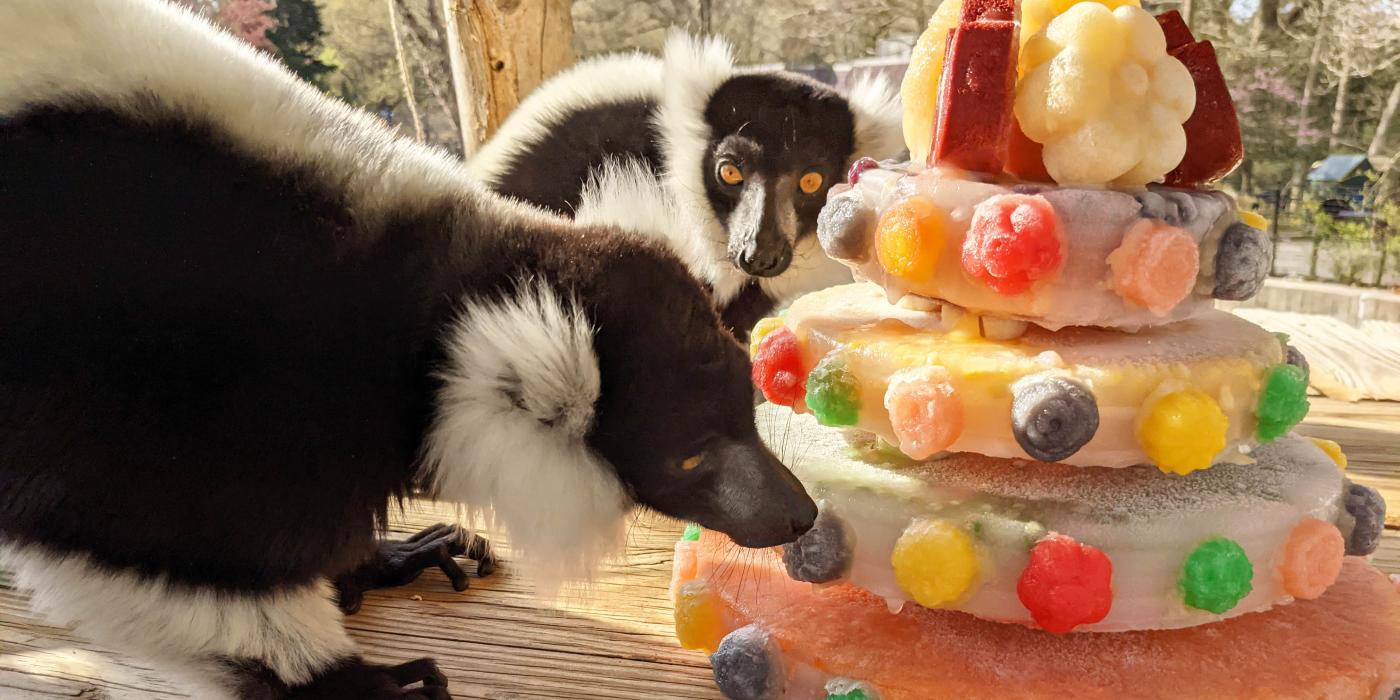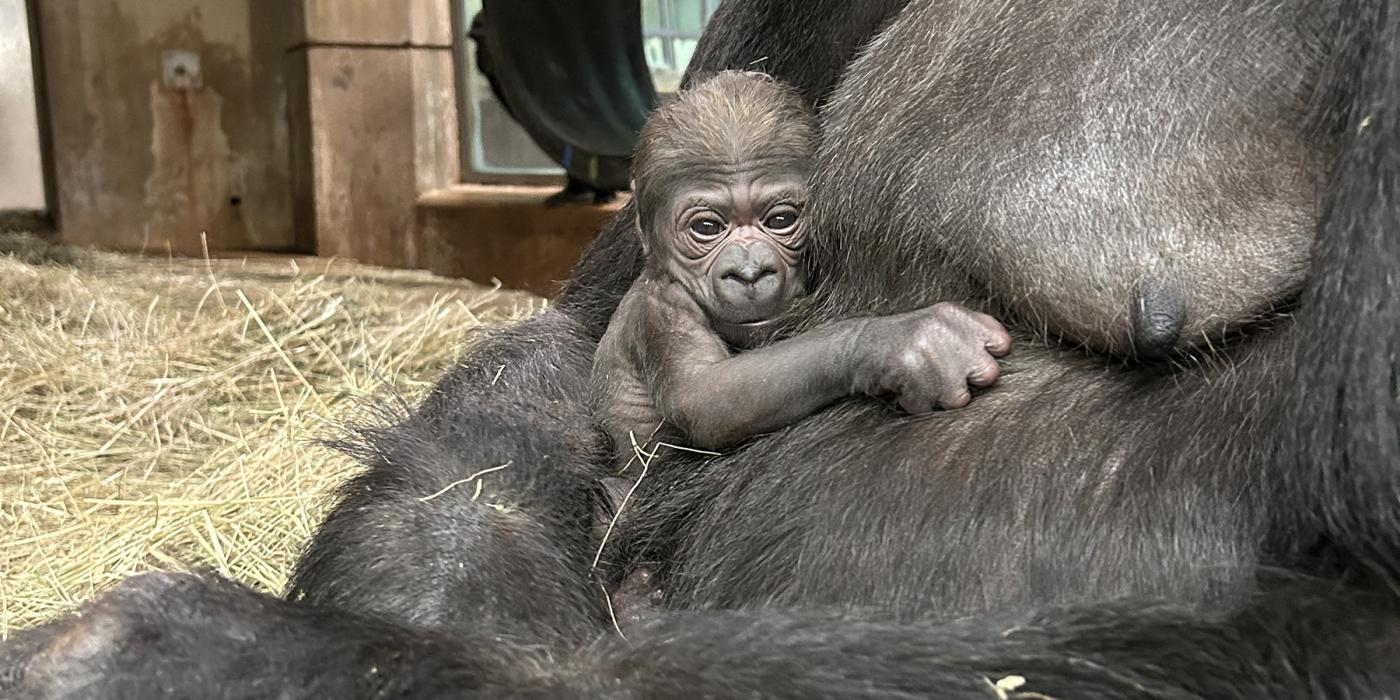Happy Birthday, Lemurs!
One sure sign that spring has arrived in Washington, D.C., is when the infamous cherry trees at the Tidal Basin sprout their beautiful pink blossoms. Our primate team drew inspiration from them as we planned our annual birthday bash for our ring-tailed and black-and-white ruffed lemurs!
Between March 15 and June 2, we celebrate six birthdays on Lemur Island: ring-tailed lemurs Bowie, Tom Petty, Southside Johnny and Birch; and black-and-white ruffed lemurs Aloke and Wiley. With so many birthdays so close together, we combine them all into one celebratory day. Of course, it wouldn’t be a birthday without cake, and Nutrition Sciences keeper Brian Cannon whipped up two marvelous four-tiered fruitsicle cakes for our lemurs to share.
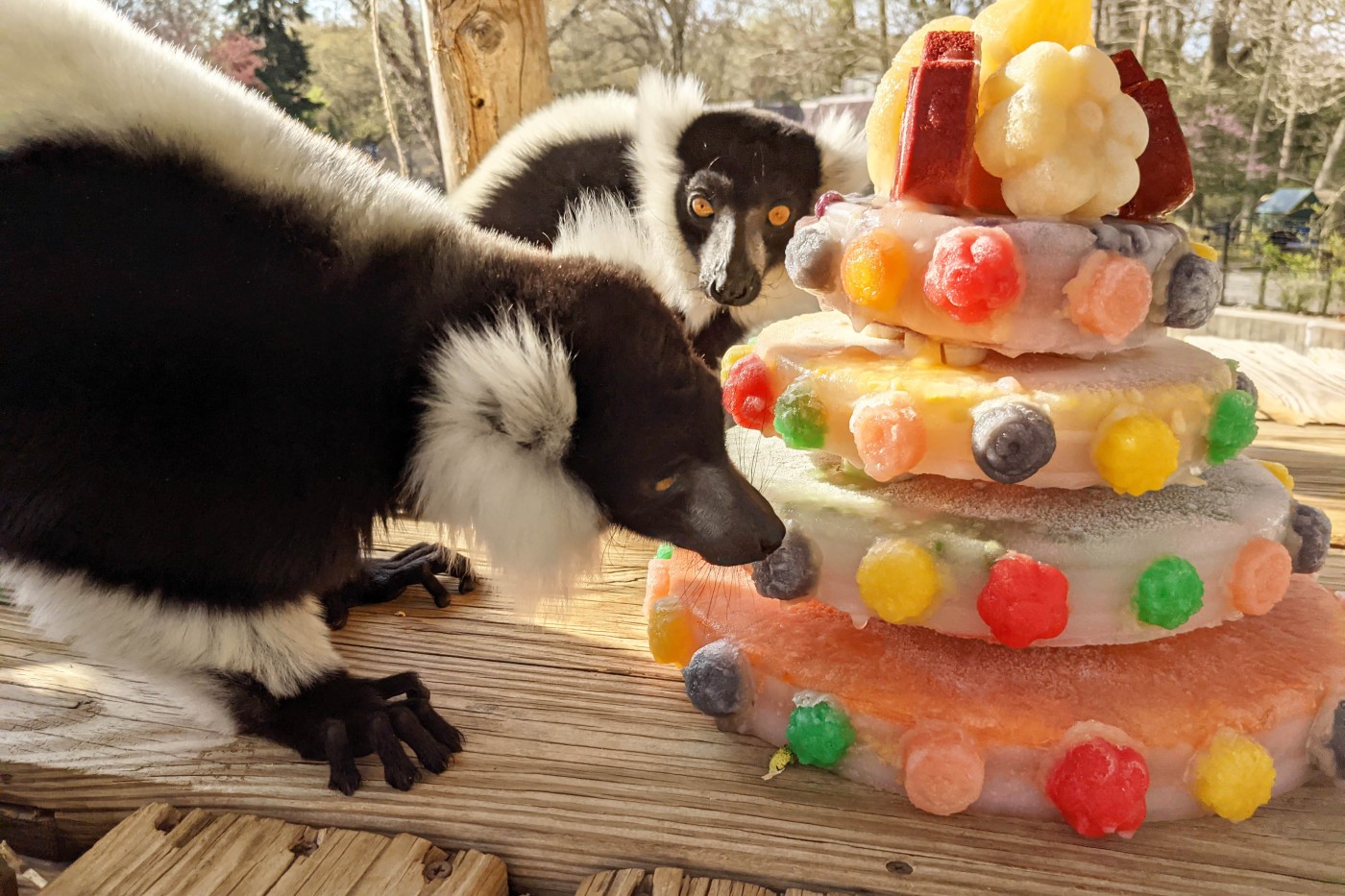
The base of the cake was composed of water, beet juice and some of the primates’ favorite produce, including banana slices, blueberries, peas, corn kernels and carrot chunks. Bryan adorned the top of the cake with red “tulips” made from leaf-eater biscuit paste and yellow “flowers” made from diluted applesauce. Encircling the tiers were small flowers of all shapes that were also made from diluted applesauce. Some of them were tinted with food coloring for some added pizzaz!
Many species of mammals, birds, reptiles and invertebrates feast on flowers in the wild—including lemurs. As they forage for fruits and flowers, pollen sticks to their noses, hands and fur. Then, they distribute seeds and pollen as they move through the forest. In fact, black-and-white ruffed lemurs are some of the most prominent pollinators in their native Madagascar!

Here at Smithsonian’s National Zoo, the Great Ape House has a rooftop garden where our team grows hibiscus, marigolds and squash flowers. In summer, we collect the flowers and give them to the primates as a special enrichment treat. Of all the flowers, the lemurs’ favorite seems to be hibiscus—they eat the entire bloom!

In the colder months when we can’t grow fresh flowers, we make our own out of tissue paper and encourage the lemurs to forage by hiding one of their favorite treats inside: raisins. Whether we use real flowers or these tissue paper substitutes, this enrichment encourages them to use their natural foraging behaviors.
Meet The Lemurs
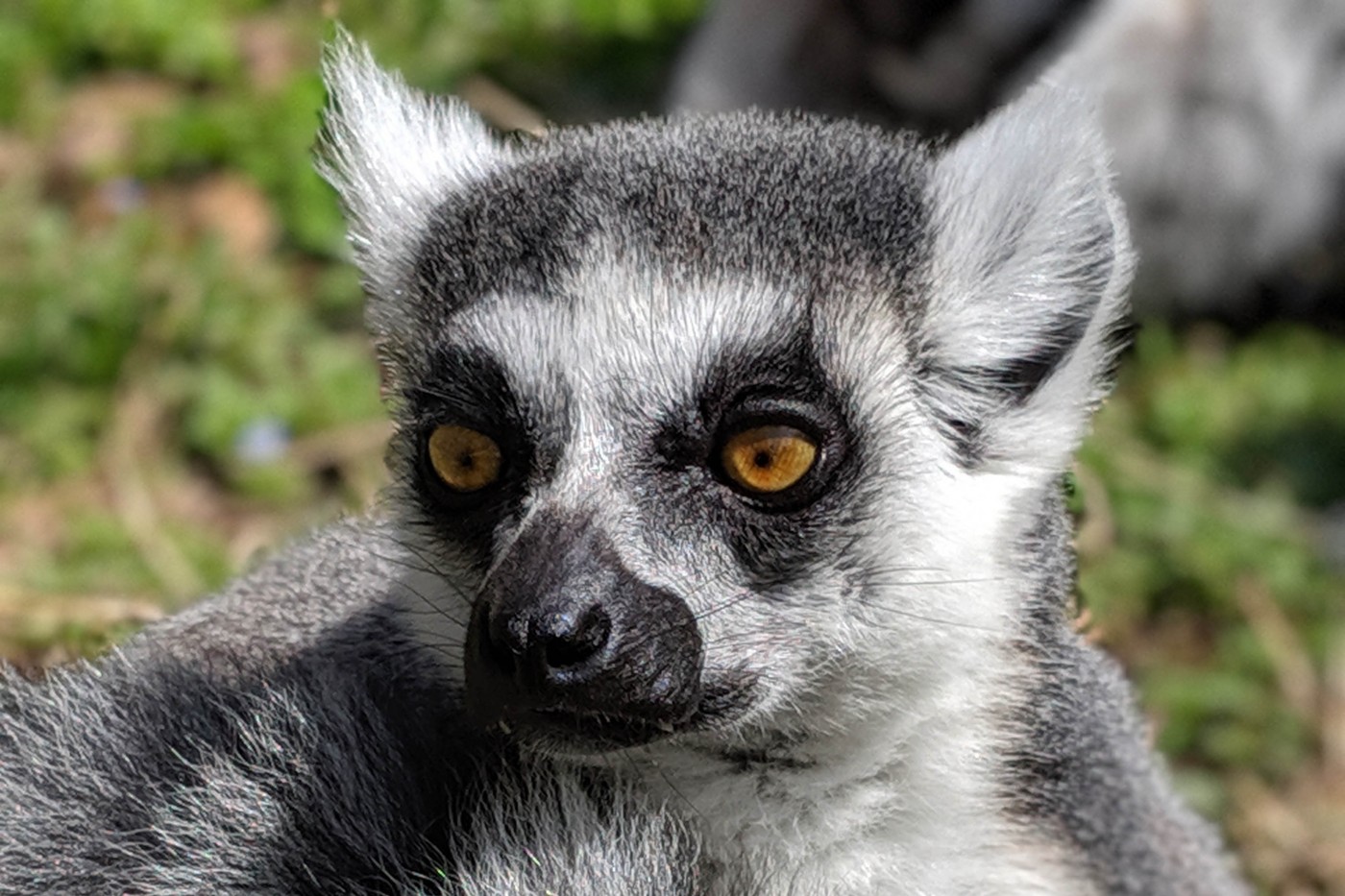
Bowie, the bravest of the ring-tailed lemurs, turns 8 years old May 2. If our black-and-white ruffed lemurs try to mess with one of Bowie’s ring-tailed buddies, he will chase them all around Lemur Island. Whenever keepers initiate a husbandry training session, Bowie makes his way to the head of the line and is one of the first to volunteer. He is quick to investigate any new enrichment items we place in their habitat, too. However, Bowie will wait for the other lemurs to figure out the puzzle feeders first before swooping in and taking the treats for himself! Beets are Bowie’s favorite food.
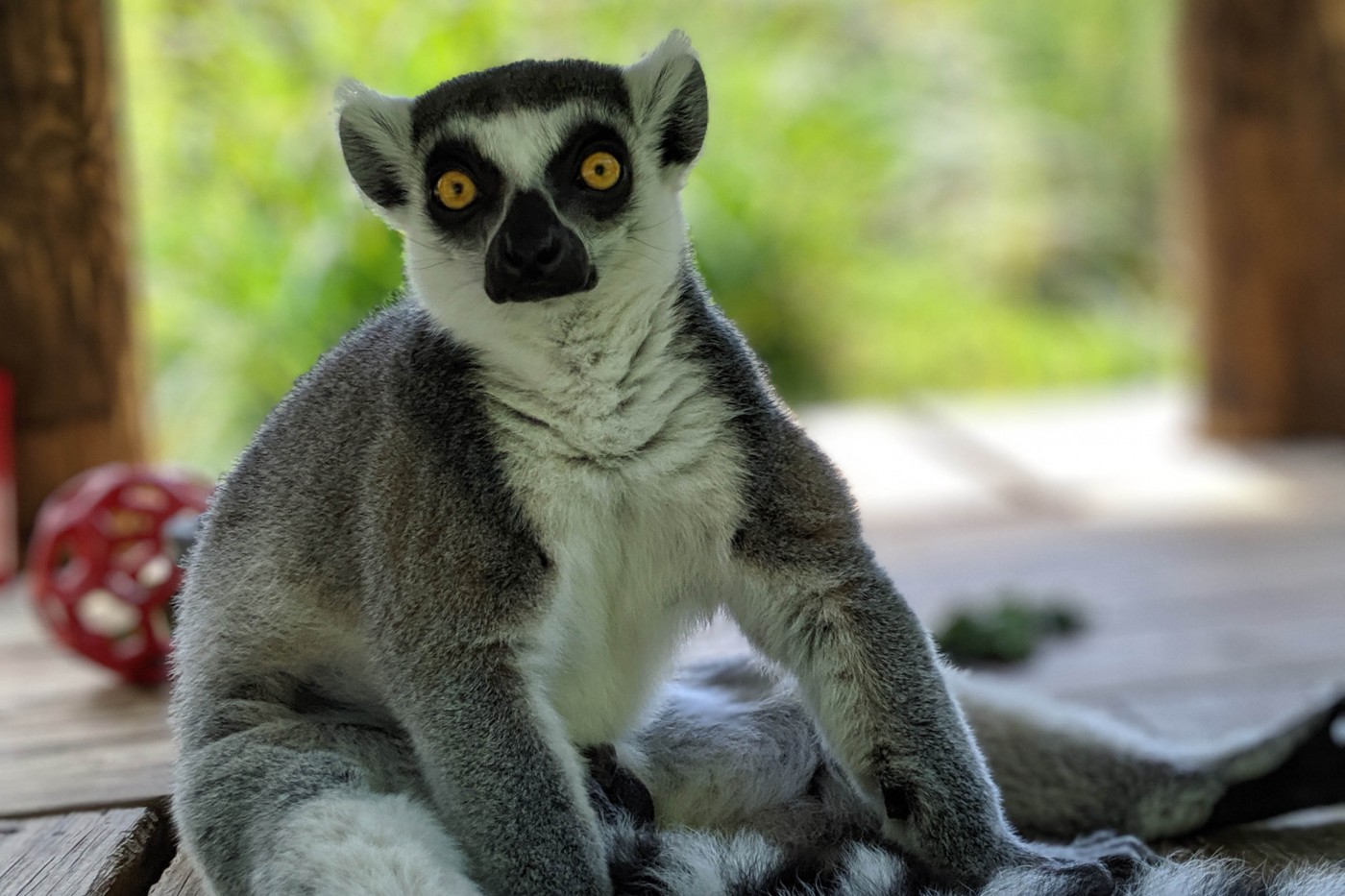
Tom Petty, the team player of the ring-tailed lemur group, turned 8 years old March 22. He often lets the other lemurs train first and will patiently sit off to the side and wait for his turn. One easy way to tell Tom apart from the others is by looking closely at the markings on his head; there is plenty of white space between his black eye rings and the gray hair on top of his head. He has two favorite foods: carrots and primate chow.
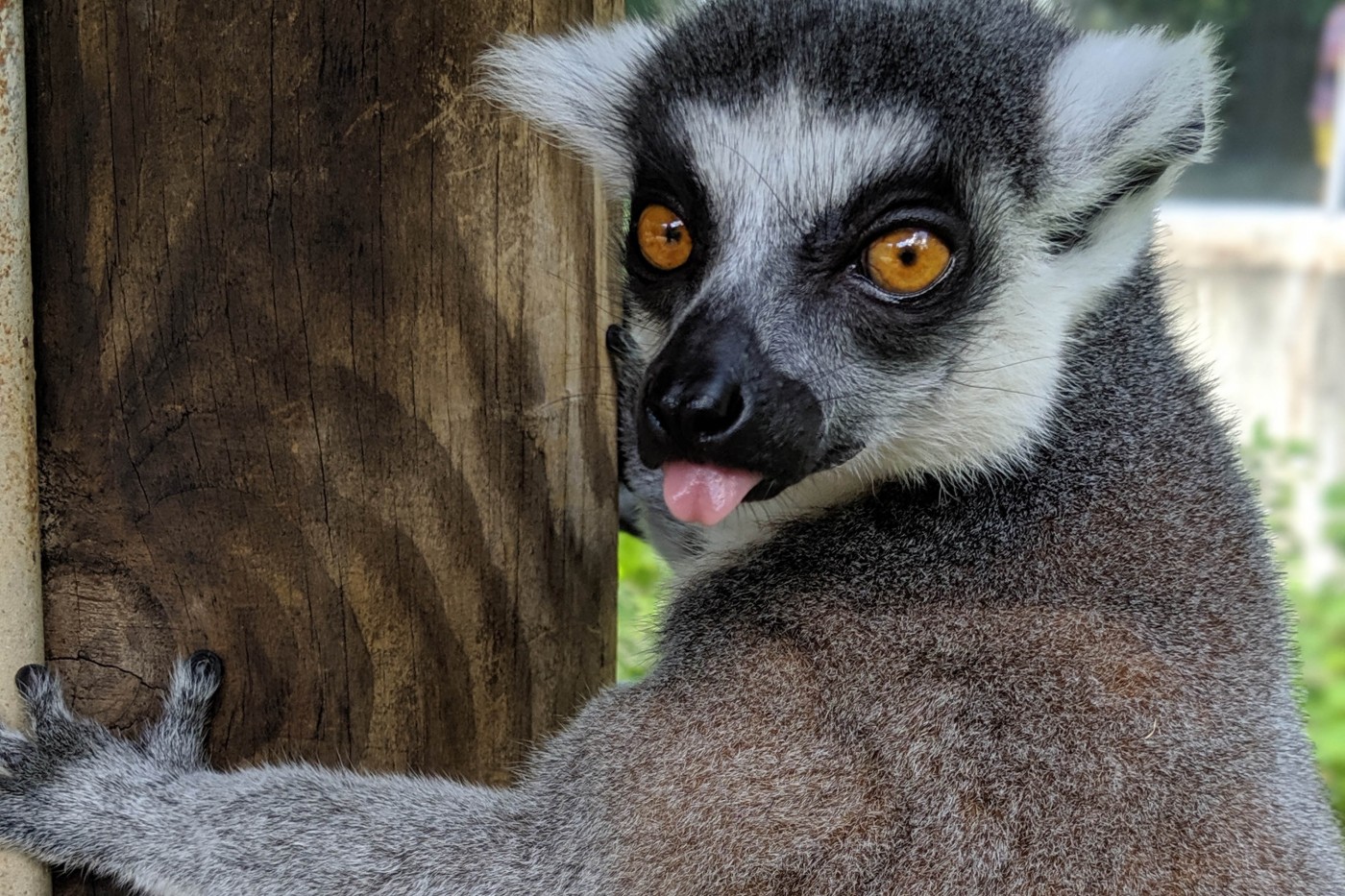
Southside Johnny, our most independent and outgoing lemur, turned 8 years old March 23. He has piercing eyes that are a dark orange hue and a small white “V” at the edge of the gray hair on his forehead. It’s not unusual to see this ring-tailed lemur resting by himself. He seems to enjoy the company of keepers and will seek out opportunities to engage and interact with us. Johnny and his buddy, Birch, can often be seen sunning themselves on Lemur Island. Butternut squash is his favorite food.
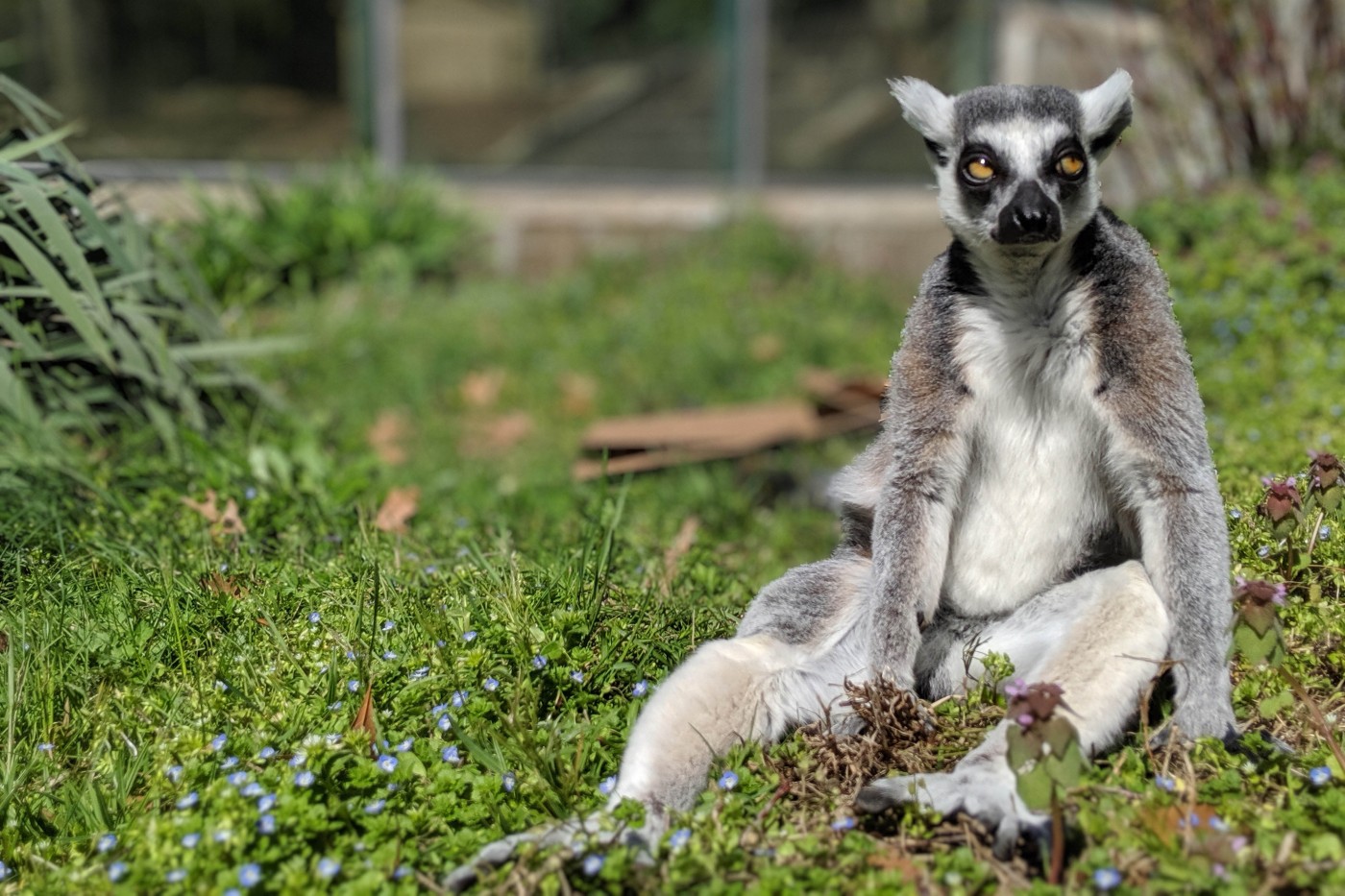
Birch is the oldest of our ring-tailed lemurs; he turned 9 years old March 15. He is also the most shy and timid of the group. Thankfully, his brave group-mate Bowie always has his back! Birch is enthusiastic about training but seems to prefer to do the husbandry behaviors we ask of him in the background, away from the spotlight. Green peppers are his favorite food.
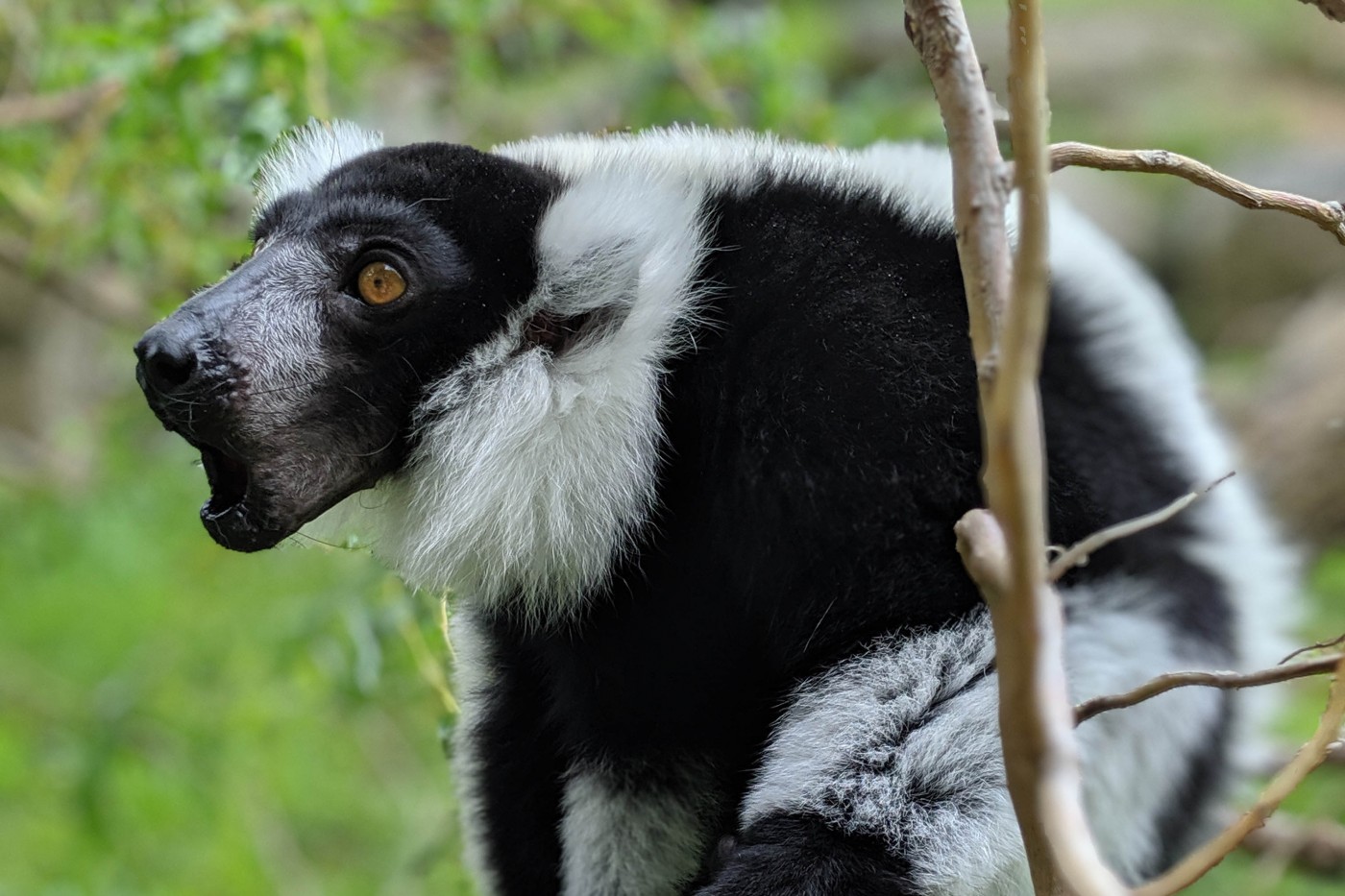
Aloke, our older black-and-white ruffed lemur, is very confident. Whenever there is something new to explore in the habitat, he will immediately approach the item to smell and scent mark it. Black-and-white ruffed lemurs have scent glands on their chest and neck that they rub on new things to say “this is my spot!” Aloke will turn 12 years old June 2. Like many of our primates, Aloke has a taste for grapes.
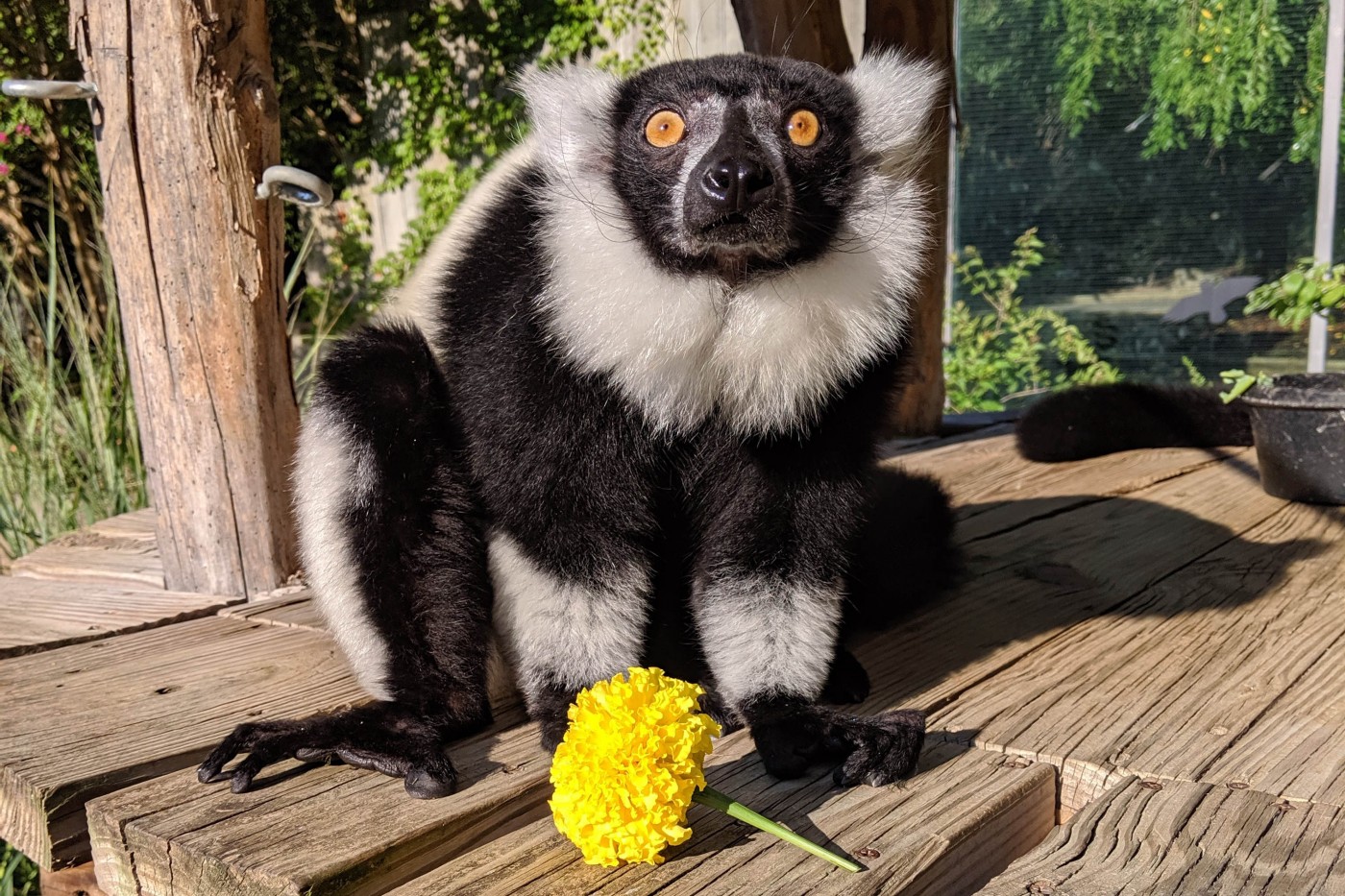
Wiley is a true showman. When we let the lemurs outside, our younger black-and-white ruffed lemur takes to the treetops. Wiley’s loud calls let everyone know that he’s around! He enthusiastically participates in training and seems to enjoy showing off his skills at leaping, balancing and hanging. Wiley turns 11 years old May 4. Bananas are his favorite food!
I want to help lemurs! What can I do?
Lemurs belong to the suborder prosimians—the most diverse group of primates. All lemur species are endemic to Madagascar; they exist nowhere else on Earth. Unfortunately, they are also the most threatened group of mammals on the planet; 94% of lemur species face extinction.
One of the major causes of lemur population declines in Madagascar is deforestation. More than 50% of Madagascar’s forests have been destroyed in the last 50 years due to slash and burn agriculture, illegal trade in exotic hardwoods like ebony and rosewood, and coal and gem mining. The International Union for Conservation of Nature considers ring-tailed lemurs endangered and black-and-white ruffed lemurs critically endangered due to these threats.
The good news is that you can help lemurs! Be an informed consumer; only purchase products from Madagascar that are certified as sustainably sourced.
I hope you enjoyed learning more about our lemurs’ personalities and how you can contribute to their conservation. We can’t wait for the Zoo to be able to safely reopen so everyone can see them!
The Smithsonian’s National Zoo is temporarily closed to help prevent the spread of COVID-19.Our whole team works diligently to care for our animals and keep you connected to the Zoo. With your support, our conservation mission continues. If you can, please join us in this important work by making a donation today. On behalf of the animals we care for and work to protect: thank you.

